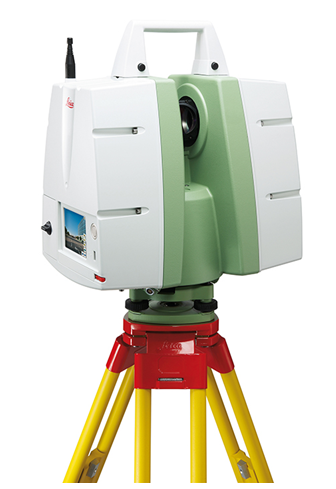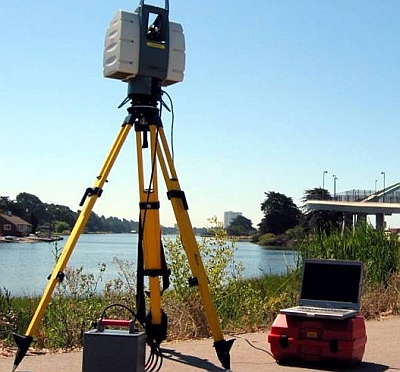3D Laser Survey: The new industry benchmark
Having just turned 60 years-old, I hit one of the major benchmarks in life.
When I was younger, I can remember thinking 30 was as old as you could ever get. Time changes the way we think about things.
I started my business in 1988 and still enjoy running our firm 25 years later. I have lived through the changes from ink on Mylar to Cad drawings, the introduction of GPS and the effect the internet has had on all of our lives. The latest change in the engineering world is the natural progression from 2D plans to 3D deliverables.
In 2005, when we started collecting data with high definition lasers, we were on the cutting edge. Today, this method is becoming even more mainstream.
Most of the sales we made in those first years required us to collect data in 3D and turn it into a 2D AutoCAD or Micro station deliverable. Today, probably 15-20% of our clients just ask for the “point cloud” data and use software that is written for their design and construction needs, making the information much more user friendly. How the industry has changed.
Transportation
For many decades, we went out and surveyed roads the same way using digital survey equipment. While we still use traditional GPS and total stations, we incorporate 3D laser scanning more and more.
We were on teams that won some of the intersection projects north of Atlanta on I-85. On all of these projects, we scanned the roads, ramps, bridges and main line. Why? Because safety is always #1. Our surveyors don’t go into traffic or stand by the road unless there is no other way to do the job.
We were also able to produce very precise useable bridge data in a relatively short timeframe, which allowed our clients to begin preliminary planning. Another benefit is that the free point cloud viewer that comes with every project allows the client to visit the site, make precise measurements, and view the project in 360-degree photography without leaving their desks.
Nothing is more valuable than a site walk, but trying to remember if there were four light poles or six at a crucial intersection can be solved instantly with the click of mouse. Micro Station, AutoCAD and Revit now have programs that can import 3D survey data directly into the design file, which is a very big advantage for designers.
Structural Elements
In 1978, I was asked to survey the interior of Lenox Mall in Atlanta and produce an as-built for a structural survey. We used a steel chain and offset lines and it took many days to document simple column lines.
Now we can capture and document the most extreme and difficult data in just a few hours. We regularly use laser scanners to document wall failures, roof collapses, and to certify that massive complex structures are build per the design drawings.
Imagine having to perform a complex as-built survey of something like the Georgian Dome without a laser scan. It would be unthinkable! Likewise, engineering for tank farms and pipe transfer areas are much easier to document with a scanner.
Today, more and more clients are asking for a “laser survey” and then importing the registered point cloud data to begin designing the “fix.” As a result, travel expenses are roughly one third of what they were before.
Architecture
New Greenfield architectural as-builts are required and one day in the not too distant future they will require a laser scan point cloud to document the final conditions.
The real advantage in the 3D world is when you can scan older buildings that are not uniform and not consistent prior to construction and find all of the asymmetrical areas that will give a contractor and owner fits when construction begins.
For many reasons, we are documenting existing conditions in older buildings and in some cases they have very nice architectural features built by real artisans that we are able to capture to give the client a much clearer picture of what is there.
Older buildings have sagging floors, walls with varying thicknesses, and sometimes no interior air-conditioning or duct works. These are all areas where 3D technology is the only way to fly.
MEP Energy and Complex Plumbing
We call these highly complex environments. The original laser scanner was invented to map oil platforms and massively large refineries so that engineers could document and design the required elements correctly.
Unfortunately, there was no other way to do this. Weekly, I talk to clients who make 4-6 trips to jobs to check and recheck hand measured structures. Good news: there is no reason to do this ever again! Using a laser scanner is cheaper, faster and more accurate and once you capture the data, you have it forever. There is no better tool.
In this field, “smart point clouds” have turned from a dream to a reality. There are now programs that can automatically turn a point cloud into a series of pipes. Though it is not perfect yet, it is so much better than what was available in the past. The time it takes to model a pipe room is one third the time it took five years ago.
Most serious pipe designers are requesting laser scans on large projects. The new software models and performs clash detection and can export the data into many mainstream Cad platforms. This is now considered an industry best practice.
Low-tech Solutions
When we began in 2005, high speed laser scanners were our main tool. But unless the renovation was complex, the cost benefit for documenting relatively simple environments like hotels and commercial space was not very high.
For the past year, we have been providing Revit models of existing buildings cheaper and more efficiently than ever before. Previously designers sent interns or fresh college grads in the AEC industry to measure the space, who then took the data back to build a model.
Now we can measure the interior with a handheld laser and when we leave the building, the model is complete. Many projects can be completed in a single day. With a few hours of clean up the next day, the project is finished and out the door.
Our price is generally very competitive compared to the cost of sending designers to measure the space and the advantage is that they are designing and generating revenue. It is a win-win.
I am often asked by designers why they have to change the way they have been designing when it has been successful for decades. The answer is simple: there is a better way to do it.
With the advent of 3D printers, many designs will be printed and go straight from design to printer to the construction site with no human intervention.
The construction industry is changing, as are the designers who shape that industry. We have reached the new benchmark of 3D survey, design, fabrication and testing and there is just no going back.
###
Tate Jones has over 40 years of experience in land and aerial surveying and was one of the country’s earliest adopters of 3D laser scanning technology. A nationally recognized expert in the field of 3D data capture, he has worked with hundreds of clients in the engineering, architectural and construction industries. Contact him at tjones@lasurveying.com or visit www.landairsurveying.com.


